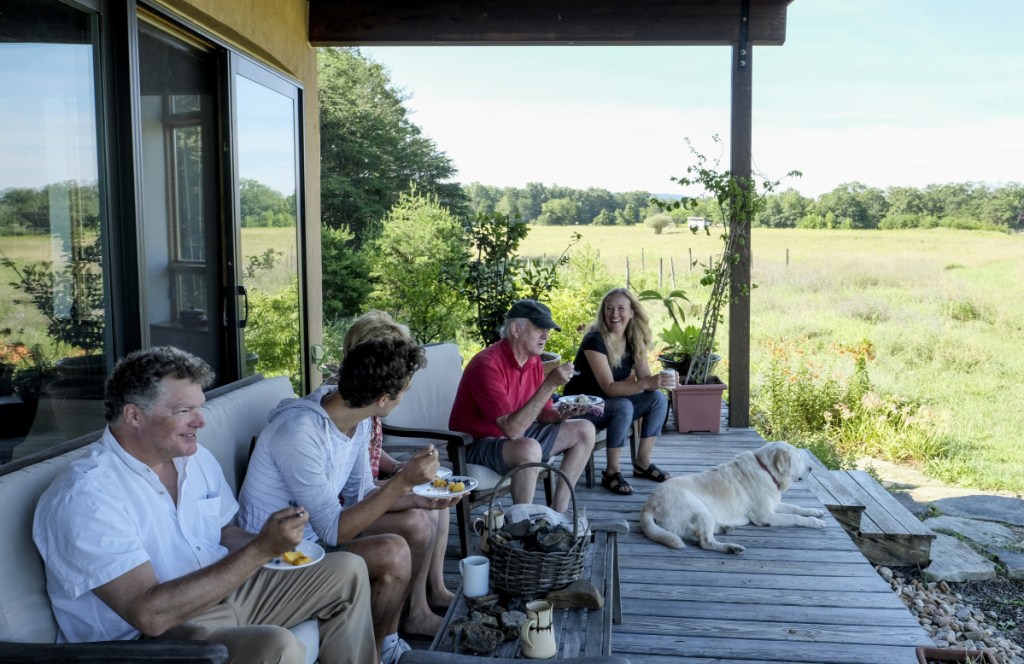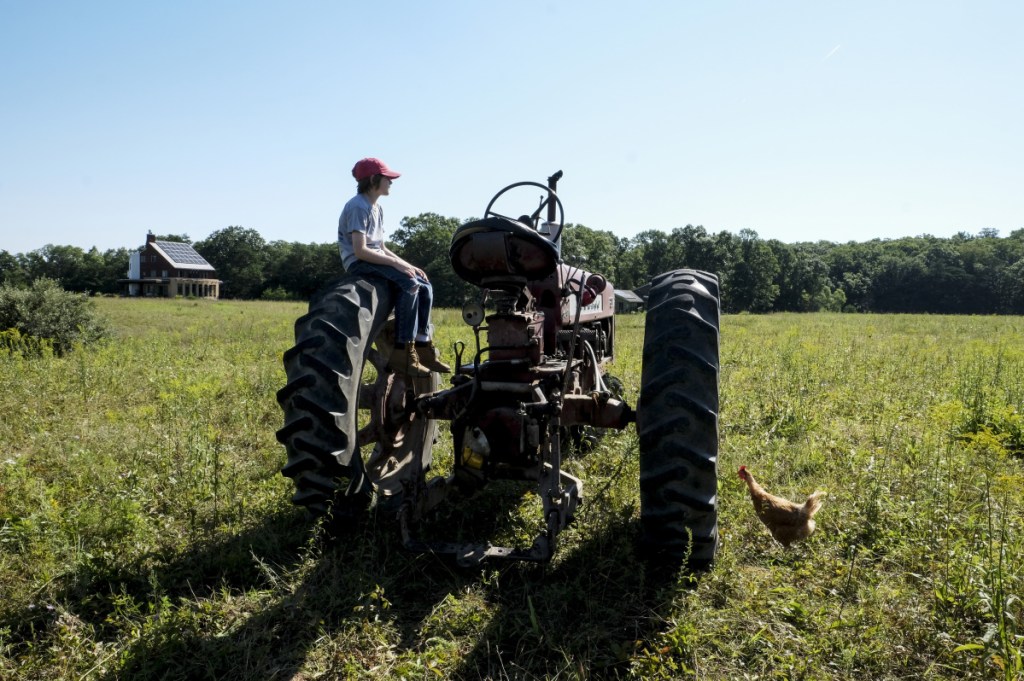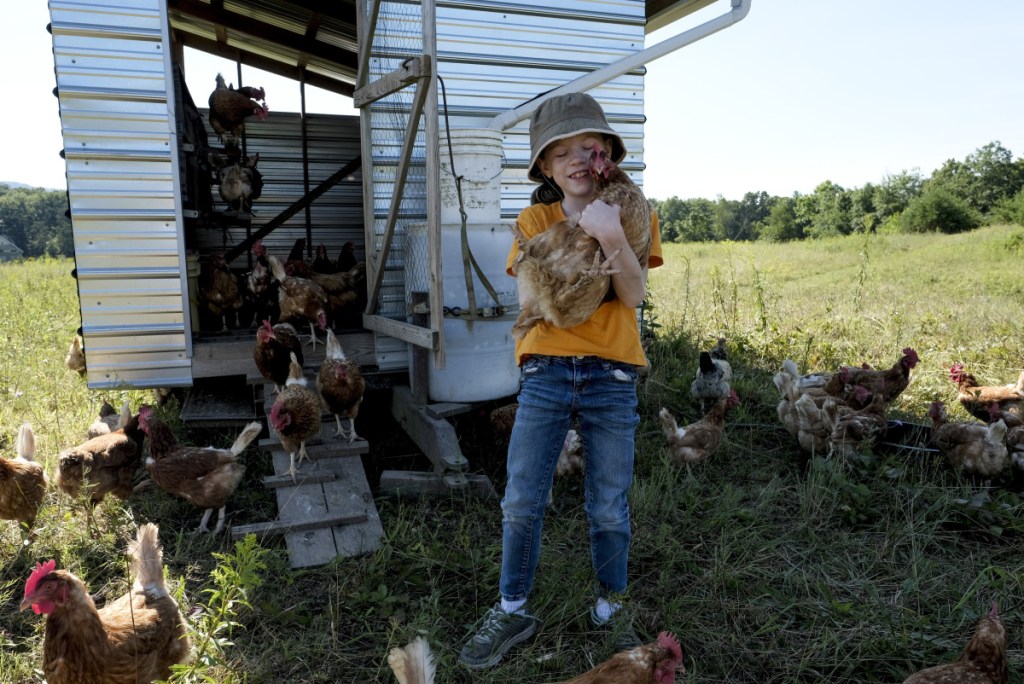GERRARDSTOWN, W.Va. — The first thing you see at the entrance gate to the rolling farmland of Broomgrass is a sign for honeybees and the barn. Down the gravel road is the mobile sheep pen, with four ewes – Pansy, Bertha, Myrtle and GiGi – surrounded by the seven lambs born in April.
Then it’s just grass and fields framed by forest as far as you can see. Residents’ houses are hidden in the folds of the land. And there are two houses for eggs, with hundreds of chickens, five movable shelters for meat chickens and turkeys, nine pigs over the hill and 24 cows grazing in pasture. Mostly, the landscape is open.
This is Broomgrass – a “new farm community prototype” aimed at restricting development – in Berkeley County, the rural eastern panhandle of West Virginia, two hours west of Washington. It’s located in the view shed of the 23,000-acre Sleepy Creek Wildlife Management Area and is adjacent to the 60-acre Audubon Wildlife Sanctuary across Back Creek.
Three hundred and twenty acres – half wooded and half fields, including an organic produce and animal farm and 16 one-acre home sites, make up the community. Eleven families, whose members range from age 8 to 67, own one-acre lots. Five lots are for sale.
What you get as a resident is more than a beautiful place to live in the country. “You are also a one-sixteenth owner of the 320-acre property, which was placed in a farmland protection program preventing future development,” said Matthew Grove, co-founder of the community with his wife, Lisa Dall’Olio. “There’ll never be more than 16 homes, and the land will be forever wild.”
“It’s like living in a state park,” said Casey Willson, a resident with his wife, Meg Kinghorn, for three years, who proudly declared, “I’m the oldest resident.”
“We had no intention of moving,” Willson said. “Our house in Takoma Park, Maryland, was paid off. We had a cabin in Hampshire County, West Virginia. But a friend of Meg told her about the community, and we were in Berkeley Springs and thought, ‘Broomgrass isn’t far away. Why don’t we go look it up?’ “
At that first visit, “we just looked at each other and nodded our heads,” he recalled. They returned the next month and selected a lot.
“Broomgrass was born in response to a question: Can we create a model community that saves the family farm while developing it lightly?” Grove said.
In the late 1990s and early 2000s, there was a mass sell-off of family farms, and developments were popping up. “Low-interest loans and no-credit-required kicked this sprawl into high gear,” Grove said. “It was unsettling to us. I grew up in Berkeley County and was pretty disturbed to see the rural countryside going away. We wanted to do something about this ‘taking’ of farmland.”
“We were terrified it could fall victim to development,” Dall’Olio said.
They lived in New York City but returned to Martinsburg to open an architectural practice.
Three families, including Grove’s, jointly owned the Broomgrass land. A neighboring farmer was farming it.
“We brainstormed how to keep the farm going, prevent development and live there. We spent a year developing our ideas for a new farm community prototype. Then we bought out the other owners,” Grove said.
They knew they couldn’t do it all themselves, he said. “We thought, ‘If one family can’t maintain the typical American farm – which is, on average, 300 acres – maybe multiple families can.'”
They came up with the idea of limiting the number of houses and the lot size, keeping most of the woodland and fields in ‘common’ and providing residents the opportunity to farm the common land.
They learned about a federal farmland protection program administered through the county that had recently been established. They submitted an application for a Broomgrass conservation easement. “I got the application,” said Lavonne Paden, executive director of the Berkeley County Farmland Protection program in 2004.
A conservation easement is a way to conserve property in a natural state by permanently restricting development. It also prevents other government entities from enforcing the right of eminent domain for structures such as power lines. And it provides some financial compensation to the owners for the limits on development.
West Virginia has 215 farmland easements over 20,000 acres, and Berkeley County has 53, covering 5,166 acres, said F. Mark Schiavone, executive director of the Berkeley County Farmland Protection Board.
In 2005, the Berkeley County Farmland Protection Board and the USDA Natural Resources Conservation Service approved Dall’Olio and Grove’s easement application.
With that money and a commercial loan, they improved the property (roads, utilities, fencing, storm water retention); built amenities (a barn and pool); delineated 16 house sites (the farmland protection program allowed one home per 20 acres); and began selling lots. They designed their house, Willson and Kinghorn’s, and three others.
“Then we ended the founder period and turned management over to the Broomgrass Community Association. Now we’re just members like everyone else,” Dall’Olio said.
There are miles of trails to walk, bike, cross-country ski or snowshoe.
“For us, Broomgrass is a confluence of everything we love,” Dall’Olio said.
Send questions/comments to the editors.





Comments are no longer available on this story